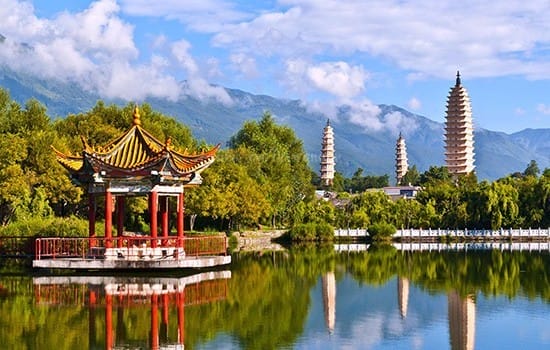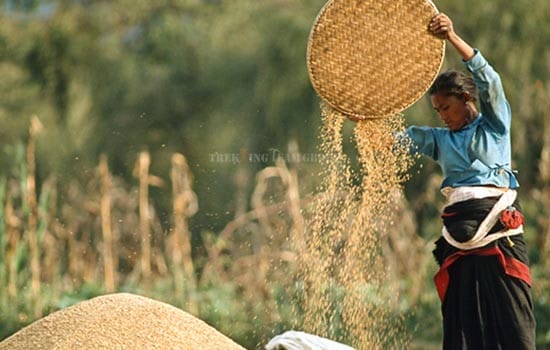At a Glance



























Trip Overview
The Beijing to Kathmandu tour features historic sites, an epic train journey across Tibet, and cultural highlights in Nepal, including Everest Base Camp and the highest monastery, Rongbuk.
Beijing to Kathmandu is an extraordinary tour that begins in Beijing, a city renowned for its grandeur. You’ll visit iconic landmarks such as Tiananmen Square, the Forbidden City, and the Great Wall, which is so vast it can be seen from space. After enjoying delicious Chinese cuisine, we’ll head to Xian to marvel at the Terracotta Warriors, one of the most important archaeological finds of the 20th century. We’ll also explore the vibrant Muslim Quarter before boarding a train to Lhasa.
One of the tour’s highlights is the adventurous train journey through the roof of the world. This remarkable train ride takes you across the Tibetan Plateau, offering breathtaking views of the highest mountains on Earth. In Lhasa, you’ll explore significant sites like the Potala Palace, the Jokhang Temple, and Norbulingka.
From Lhasa, we embark on a spectacular overland drive to Kathmandu, Nepal’s capital. On this leg of the journey, you’ll visit Everest Base Camp, where you can gaze up at the world’s highest peak, and Rongbuk Monastery, the highest monastery in the world, adding a unique adventure to your trip.
In Kathmandu, immerse yourself in the rich art and culture of the city. Explore the ancient temples and intricate art of Bhaktapur, wander through the historic Swayambhunath (also known as the Monkey Temple), and experience the vibrant atmosphere of the Kathmandu Durbar Square. Each site offers a deep dive into Nepalese culture and history, making Beijing to Kathmandu journey not only adventurous but also culturally enriching. Check out other Tibet tours that may interest you.
Trip Highlights
- Explore the Forbidden City, the Tiananmen Square, the Great Wall of China and the Temple of Heaven
- Aboard the world’s highest railway
- Visit Xian and marvel at the Terracotta Warriors
- Explore Lhasa and oldest monastery Samey and Ganden.
- Visit Gyantse.Yamdrok Lake, Sigatse, Sakya, Xegar
- Explore Everest Base Camp and Rongpuk Monastery
- Take a breathing Overland trip to Kathmandu through Tibetan pleatue
- Visit Palace, Monastery, Stupa and Temple of Kathmandu
When to Visit
Trip Itinerary
- Full Itinerary
- Outline Itinerary
Departure from home
Back to home
Cost Include
- All transfer on train soft sleeper ( If no soft sleeper available difference money will be refunded) and on private coach
- Hotel accommodation 3* base with breakfast
- All sightseeing and entry fee as on itinerary
- English speaking local guide in each city
- Everest Base Camp Special permit
- Bottle Oxygen in a Car
- All government taxes
Cost Exclude
- Travel Insurance
- Nepalese Visa ( 25$)
- Tips for staff
- Lunch and dinner
- Additional costs due to illness, force majeure, changes of flight and itinerary
- Personal drinks and Bar Bill.
Dates & Prices
The Following dates and prices are LAND ONLY itinerary joining in Kathmandu. Please make your own flight arrangements. If you need some help to arrange an international flight, we can suggest you some agents who are specialized on ticketing.
Our Tours Status Index








| trip start date | trip end date | Single Supplement | Price | |
|---|---|---|---|---|
Book with Confidence
No surcharge guarantee whether you are booking for this year or the next, we have undertaken to guarantee that all of our Land Only prices will not change once you have booked your holiday.
Dates with Festivals and Events
Recommended If you are planning your holiday and want to have once in a life time experience then chose the date that combined with events or festivals. It will enhance an experience of life time in your holiday.
Tailor made Journeys
Your journey, your way - This itinerary can be tailored to your desire.
You can also use this tour as a base for a tailor-made itinerary. Like your personal architect creating your one-of- a-kind home, our Travel Specialists will execute the trip of a lifetime. It’s all up to you – logistics, pace, budget, dates, performances, visits, explorations, meals and lodging are hammered out down to the finest customized detail. Please fill in our tailor-made request form.
Private Journeys
Customize the departure dates suitable for you
If you do not want to join a group then you can also make this a private trip with your friends and family one at your own schedule. Considering this, Trekking Team Group organizes private journeys as well. Please choose your own departure date.
Trip Photo Gallery


Open


Open


Open


Open


Open


Open


Open


Open


Open


Open


Open


Open


Open


Open


Open


Open


Open


Open


Open


Open


Open


Open






Trip Reviews
This trip showed us the beauty of Tibetan culture with plenty of highlights. It takes you from hustling Beijing to the beautiful plateau of Tibet all the way to majestic Kathmandu. I would definitely recommend Trekking Team Group to my friends and families back home and will be back again soon!!!


How these top guide books have described us?


"Ein Absolut verlässlicher, superfreundlisher veranstalter mit erstlkassigem Service.”


“Long-established trekking company with a breadth of experience and an easy-to-find location."


"A very reliable, super friendly agency offering top-notch service.”


“une agence engagée avec une belle expertise du terrain.”
Additional Information
This is ADVENTURE travel, and many of the destinations on this site are in remote, underdeveloped areas where unpredictability is the norm. Despite careful planning and organization, our adventure trips can’t be taken for granted like regular trips. Many of the places we visit lack the emergency health and safety services you’re used to in the developed world. Internal flights can be canceled, road transport is often uncomfortable and unreliable, and hotel standards may not match those of the West.
If you’re not prepared for this, you shouldn’t travel with us. The unpredictability also means that our itineraries are statements of intent, not contractual obligations. Factors such as weather, transport difficulties, and political instability might require us to change any itinerary. The trip leader will make any necessary changes after consulting with the group. Such changes are rarely significant, and we always do our best to minimize their impact. However, we cannot be held responsible for changes or delays, regardless of their cause.
What makes this trip different ?
Trekking Team Groups is one of the main supporters of Ambe Foundation, a non-political and non-profit social organization. We contribute our support to the remote village of Nuwakot and different schools like Gramin Devi, Khumbeshwori through donation, sponsorship and partnership in various projects. For details click here what we do and why we do?
Donation
Trekking Team Group donates a percentage of business profits to the foundation on a yearly basis, which supports the ongoing maintenance cost required for Gramin Devi and Khumbeshwori school, a community-based school in Nuwakot.
Sponsorship
One of the major activities of Ambe foundation is the children sponsorship program, which is conducted with full collaboration with Trekking Team Group.
Partnership (Volunteering Program)
The Ambe Volunteer Program, organised by Ambe Foundation and Trekking Team Group, aims to mobilize teams of experts and interested individuals as an effective and economic measure in providing the human capital for education, health and community development in Nuwakot District.


















